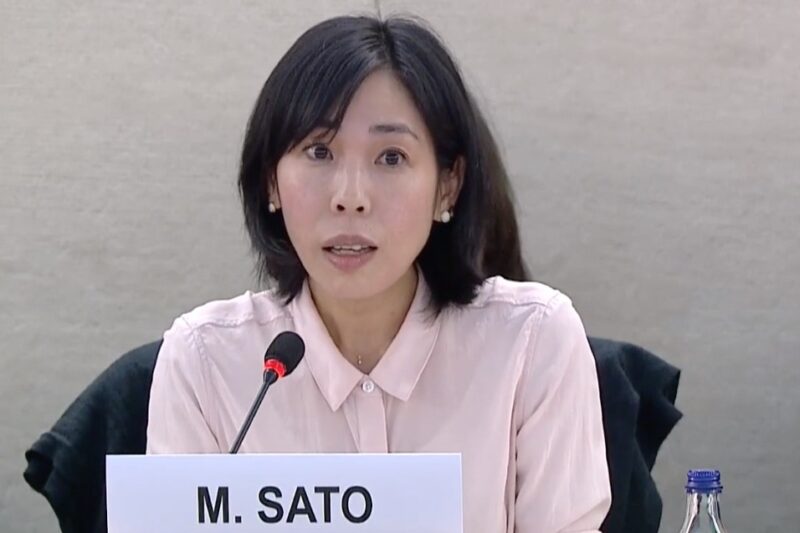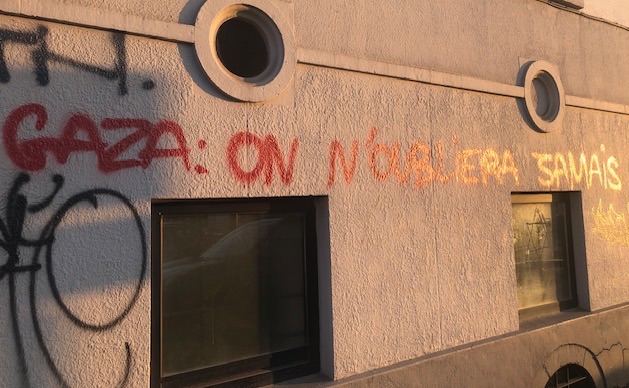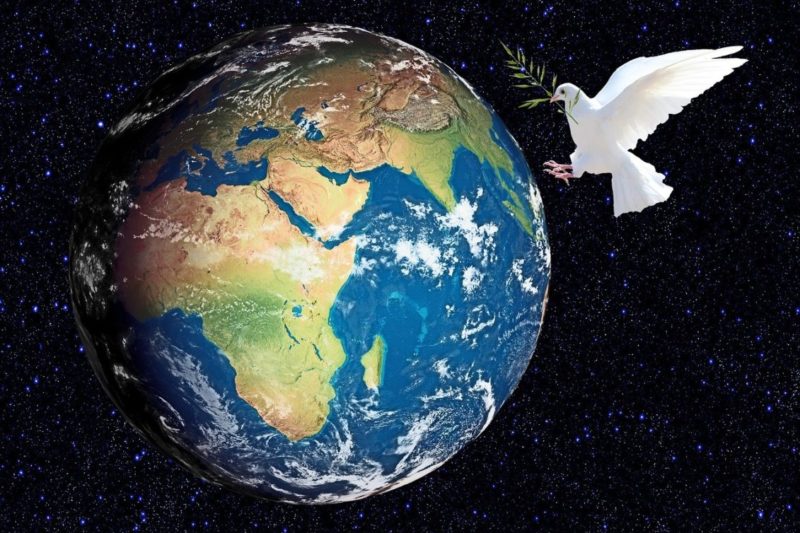“I will not allow my daughter’s blood to be trampled”. Women, life and freedom
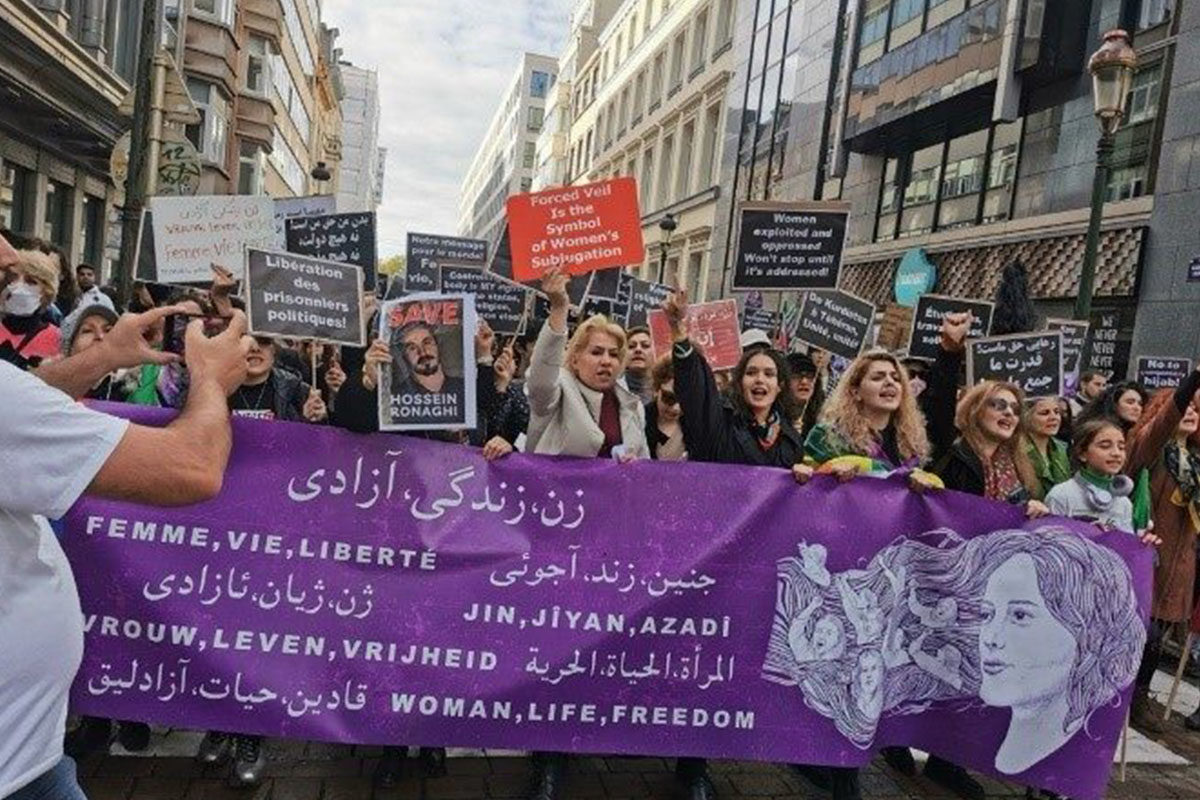
Iranian immigrants across Europe gathered on 1 October to protest at the death of Mahsa Amini and to support their compatriots. They were 5.000 in Brussels.
Iranian immigrants across Europe gathered on 1 October to protest at the death of Mahsa Amini, to support their compatriots and in order to accompany the tens of thousands of people who, despite a severe crackdown in recent weeks, took part in demonstrations in more than 150 cities around the world. “Women, life and freedom” was the common slogan in the national and international Iranian’s demonstrations.
At the same time, to prevent the dissemination of information about the protests, the Iranian government has severely limited the availability of Internet communications. Many activists in Iran have demanded the start of a massive strike inside the country.
Numerous cities, including Berlin, Hamburg, Frankfurt, Amsterdam, Brussels, Paris, London, Rome, Madrid, Lisbon, Vienna, Oslo, Stockholm, Copenhagen, Helsinki, Dublin, Toronto, Sydney, Washington and other cities in the USA, Kabul and in some African and Asian countries, as well as a few other cities including Tehran capital of Iranian, have witnessed these demonstrations against the Iranian government.
Twenty-two-year-old Mahsa Amini was on her way to Tehran from her hometown in the western Kurdish region of the country for a pleasure trip when she was arrested by the ‘Irshad Patrol’ morality police, a subdivision of the Islamic Republic’s police command. She fell into a coma while in custody and died three days after being admitted to hospital. The family and eyewitnesses said she was beaten and suffered a head injury during her arrest on 13 September. The police said she was wearing her hijab too loosely.
In various countries around the world
After her death on Friday 25 September, many cities across Iran experienced a wave of anti-government protests that were immediately suppressed with deadly violence by security forces. And since then, these protests have continued throughout Iran and in various countries around the world.
In an interview with independent journalist Nazila Maroofian in Iran, Mahsa Amini’s father Amjad Amini said: “I asked the doctor to let me see my daughter, but he did not want me to. Every part of her body was covered, but then I saw her head and the soles of her feet. We could not see the bruises on her body, but I saw the bruises on Mahsa’s feet!”
In another part of this interview, which was published on an Iranian news website, Mr Amini said that the police of the Islamic Republic asked neighbours to say that Mahsa committed suicide in front of Kasri Hospital.
Amjad Amini explained with emotion: “My sadness is that the authorities spread lies about my daughter every day! They said that Mahsa had a heart disease and epilepsy, I am her father and I raised her for 22 years. My Mahsa had no disease and was perfectly healthy. The person who hit my daughter should be tried in public court rather than being reprimanded and fired! I will not allow my daughter’s blood to be trampled on.”
Mahsa Amini’s father said that when it came to his daughter’s funeral, the police pressured the family to bury Masha’s body overnight, which was not acceptable. “I said I would not allow it under any circumstances and that people and relatives and even her mother should be present. At my insistence, the funeral was changed to 8 o’clock.”
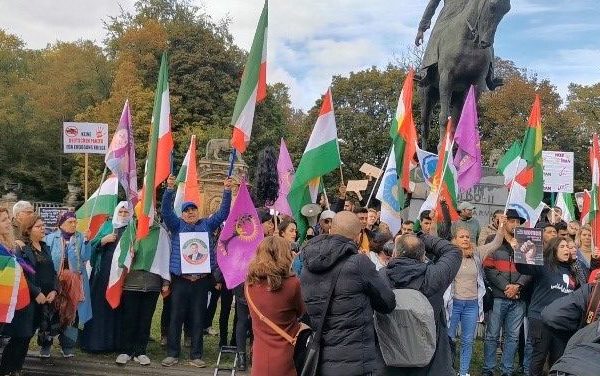
The Kurdish human rights organisation Hengaw reported that the security agencies of the Islamic Republic of Iran urged and pressured Mahsa Amini’s family to bury their daughter “without any ceremony” and far from the capital Tehran.
According to CBS News, Erfan Mortezaei, Mahsa’s cousin, and eyewitnesses said: “She was tortured in the van after her arrest, then tortured at the police station for half an hour, then beaten on the head and she collapsed.”
After her death, and the violence against women and ethnic groups, thousands of Iranians came out into the streets with the same slogans. The protesters around the world took up the messages of ‘women, life, freedom’ and ‘death to the dictator’.
141 people killed in nearly four weeks
The Norway-based Iranian Human Rights Organisation reported that at least 141 people were killed in nearly four weeks of protests in Iran, and 23 of those deaths were children.
United Nations human rights experts have condemned the killings and crackdown against protesters following the death of Mahsa Amini by security forces in Iran, and the arrests, detention, gender-based and sexual violence, excessive use of force, torture and enforced disappearances.
On Wednesday 13 October, in a meeting with members of the Council of Efficiency, Ali Khamenei, the leader of the Islamic Republic, spoke for the second time publicly about the nationwide protests in Iran and implicitly called them “minor incidents”. Iranian online news broadcast this speech.
As for the West, it would never take the risk of venturing into Iran as it has done in other countries such as Iraq or Libya unless there were other unknown factors.
There are currently major international problems. The war in Ukraine led by Russian President Putin is occupying a large debate in the United States and Europeans are concerned about what is happening in Europe.
Iran’s support for the Russian regime is becoming more and more apparent, with Iranian drones and even the use of missiles supplied by Iran to Putin’s regime, something that infuriates the West.
Firouzeh Nahavandi is a former ULB (Université libre de Bruxelles) Professor and Director of the Research Centre for International Cooperation and Development (CECID) in Brussels. Commenting on what is happening inside Iran, she said the uprising of the population against the regime is unprecedented. In none of the previous demonstrations did we hear so clearly ‘down with the regime, down with the dictator’.
“There is certainly an organisation, but there is no leader.”
“There is also a question about the organisation of this uprising. One day Mahsa’s life is taken away from her, the next day the country is on fire,” she added. “How is this possible without organisation? There is certainly an organisation, but there is no leader. This is a current weakness. Indeed, we have to remember the Arab Spring. There was no organisation or leader because the demands were spontaneous, the power was taken over by the Islamists who were organised, as in the case of the Egyptian uprising,” said Professor Nahavandi.
“If the current regime falls, who would be able to control a country where the pasdaran [Islamic Revolutionary Guards] are armed to the teeth, where there are regional demands, and all that in the context of putting the economy back on its feet? All this in these troubled times in the world.”
“This ongoing revolutionary process cannot and will not stop.”
There are, in fact, many names of people who could possibly take over circulating among Iranians. But barring support from the United States, preventing the armed forces from intervening as in the previous revolution would be very difficult, she added. However, one thing is certain. “This ongoing revolutionary process cannot and will not stop, even if it is suppressed, as long as there is no transition.”
The murder of Mahsa Amini has provoked many high-level reactions inside and outside Iran. The hashtag of Mahsa Amini in Farsi and English is regularly breaking records on the social network Twitter and has been the top trend for several consecutive days in a number of countries. This hashtag has been used more than 9 million times.
The Human rights organisation also warned of the “bloody repression of the demonstrators and the people of Kurdistan and Sanandaj in particular” and called on the international community to react immediately.
Agence France-Presse reported that the European Union and member states agreed to impose sanctions in response to the crackdown on protests in Iran. EU foreign ministers approved the sanctions, implemented 17 October. Earlier, six member countries had already proposed these sanctions to the EU.
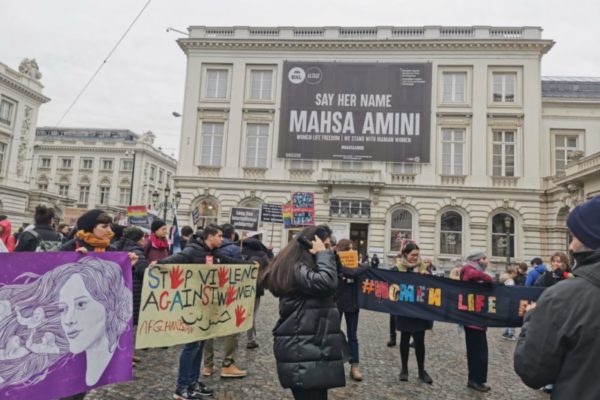
Amelie Myriam Chelly, a specialist in Iran and political Islam, who was invited to advise the MR (Reformist Movement) party in Brussels, recalled that, in the past, many protest movements have been perceived by the West as possible revolutions, without success.
She said that initially, the current Iranian protests were mainly about issues of morality. However, they have evolved into a comprehensive opposition to the system as a whole. They are comparable to other previous demonstrations in 2017-19, but with the fundamental difference that those had a single leader, with the risk that a single leader could decide for multiple reasons to slow down or stop the movement. “I think in these demonstrations the population at the same time supported the regime but challenged the government.”
Ms Chelly said today the pattern is very different. Although the new President is trying to re-establish contacts with the international community in order to reduce the sanctions and to clean up the national economy, the “population is both protesting against the existing system” and is also, once again, highly critical of economic management.
Freedom and equality
She pointed out that this new economic system is based on local applications, similar to Amazon or Uber, requiring access to the Internet, and thus the government in place cannot afford to cut this means of communication for a long time. “So it has taken the decision to immediately and violently repress the demonstrators, even though this may cost human lives.”
European Commission President Ursula von der Leyen said that “the shocking violence cannot go unanswered, and it is time for those responsible for the crackdown to be sanctioned.”
In a tweet, she hailed “the courageous Iranian women who want freedom and equality” and said that these demands are among the values that Europe believes in and should support loudly and clearly.
Earlier, the United States, Canada and the United Kingdom had sanctioned individuals and institutions in Iran in protest at the crackdown.
After Mahsa’s death, the majority of cities in Iran have been holding protests every day, but the protesters are being suppressed by the Iranian police and many are being killed .
However, in an Instagram campaign, tens of thousands of Iranian women have protested against the mandatory hijab by posting their photos without hijab. In this campaign, the photos are shared with the message: “I am a woman, get used to seeing my hair, without the mandatory hijab.” In another protest campaign, a number of Iranian women cut their hair in a symbolic gesture to protest at the death of Mahsa Amini after her arrest by the Irshad Patrol.
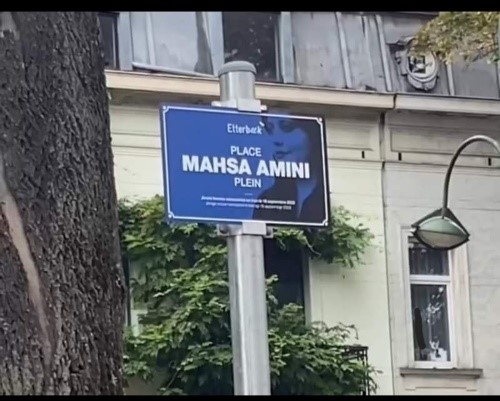
The impact of this campaign and hashtag was so strong around the world that in Etterbeek, a municipality in Brussels, Belgium, the local authority unveiled a square temporarily renamed Place Mahsa Amini, in front of its city hall, in a ceremony on 17 October.
Laily, an Iranian woman living in Belgium who is joining the marches with thousands of other people to support Iranian citizens, said she believed that the protests will grow every day and will be more and more powerful because of the new generation, which does not want this dictatorial regime. “The time for revolution has come. Women can change things; their power is immense. We can change the situation and take back our basic right to freedom.”
“Even if they try to kill me, I will not stay silent.”
Laily hopes for great change in Iran. Speaking with emotion in her voice, she said: “Even if they try to kill me, I will not stay silent. It is a different time now. I feel that my voice is stronger now than before, I can speak freely without any limitation. I want to support the people of my country, and when I see the solidarity, I feel more powerful. We, women and men of Iran and the whole world, all together we deserve this freedom because we sacrifice ourselves. Now that everyone is with us, it gives me more energy and I think this kind of support can finally change something for the Iranian people.”
The protests around the world and in Iran continue, and we do not know what will happen in the future. But the majority of Iranians hope for the better, and for positive change in the regime.



